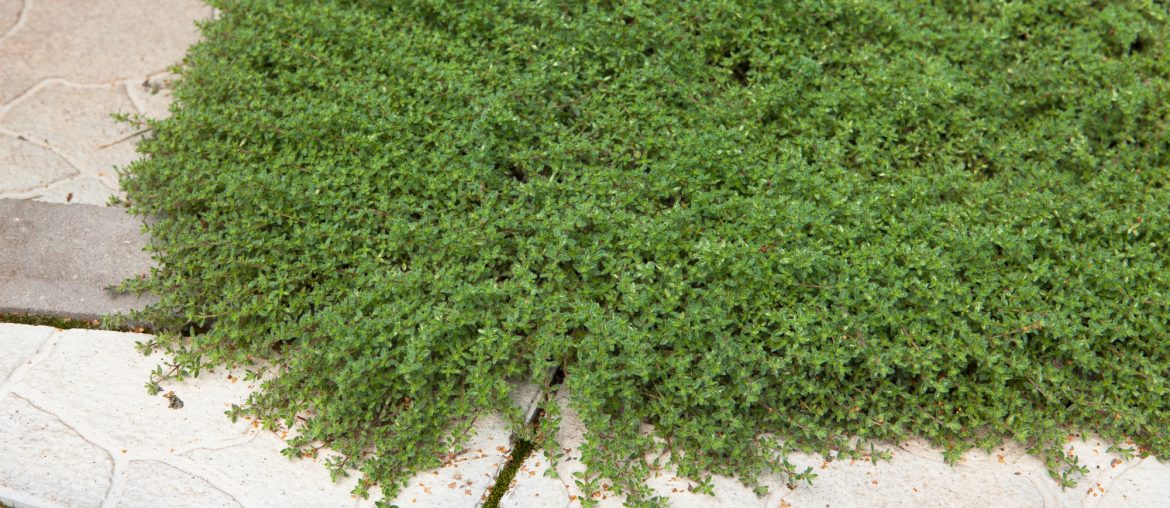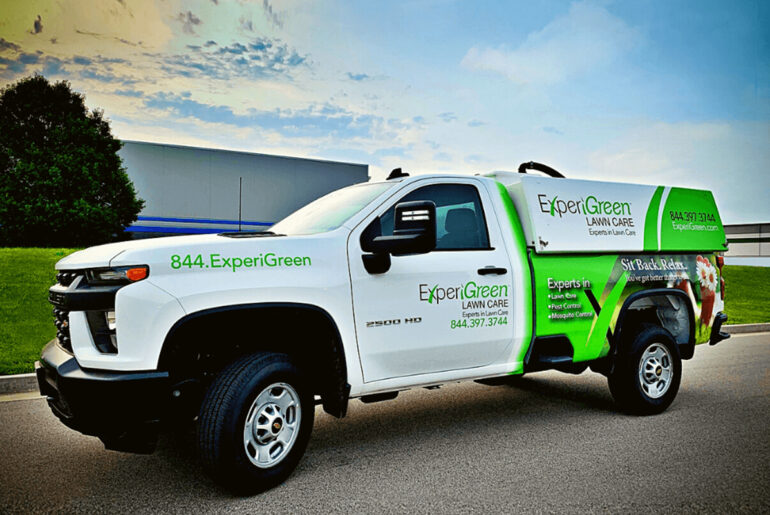The perfectly manicured green lawn is not as perfect as many people think. The truth is, that perfectly manicured lawns contribute to climate change in many ways. According to Smithsonian Magazine, it requires large amounts of water to keep these lawns green, fossil-fueled tools for maintenance, and harmful chemicals to keep weeds at bay.
Because of this, many are reimagining what the “perfect lawn” actually looks like along with making other small changes within their homes to help protect the environment. Here are some actions you can take to reduce the negative environmental impact of your lawn and landscaping.
Create Natural Pathways
If you are working with a landscaper to design your perfect garden, then consider what kind of garden path you’d like to have. Several factors can contribute to whether or not your pathway is eco-friendly:
- Permeable: Permeable paving allows water, such as rainfall, to soak into the soil below, providing hydration for your plants. Non-permeable paving creates problems with runoff, puddling, and even flooding.
- Locally Sourced: If you are looking at stones to pave your pathway with, then try to find options that are sourced locally. Finding local materials means that your stones do not have to be imported from other parts of the world and increase carbon emissions through the transportation process.
- Natural or Recycled Materials: Using materials such as chipped wood, bark, and brushed brick can help create a permeable pathway using natural materials. This can also help you to save money when landscaping.
By choosing your pathway based on these factors, you can create a beautiful garden that is aligned with your goals to create an environmentally sustainable outdoor space.
Embrace (Some) Weeds
One of the first steps to escaping the perfectly manicured garden and lawn is to embrace some weeds. Many weeds can help indicate problems with soil, assist with wildlife management, and can even be digestible.
- Lamb’s-Quarter: Lamb’s-Quarter has a powerfully restorative effect on malnourished soil. This weed reconditions your land, helping with any future goals you have for growing a garden.
- Dandelions: Dandelion roots grow very deeply, loosening soil that is packed too tightly and bringing nutrients closer to the surface. You can also consume dandelions by making dandelion tea.
- Mugwort: Mugwort is a difficult weed to get rid of. It is invasive, and many people want it out of their yards. However, mugwort can absorb heavy metals that might be present in your soil, and it also prevents erosion.
By embracing these weeds, you can create a healthy outdoor environment for growing food and beautiful flowers.
Eco-friendly Ways for Getting Rid of Weeds
While some weeds provide benefits to landowners, not all of them are welcome. However, many weed-killing solutions use harmful chemicals that can disrupt local plant and animal life. There are many eco-friendly ways to get rid of weeds in your garden.
- Weeding by hand: Pulling up weeds by hand takes a good amount of time, but it also provides many benefits! If you pull the weeds yourself, you can spend time in the fresh air and sunshine, and you can even involve your whole family in the effort. If you don’t have time to pull the weeds yourself, you can work with a lawn care company.
- Vinegar: Vinegar is a fantastic alternative to many household cleaners, but it can also be used in your garden. By spraying vinegar on unwanted weeds, you can dehydrate them. Vinegar can also be mixed with lemon juice or salt to have an even stronger effect on weeds.
- Mulch: Mulch covers the ground and prevents sunlight from reaching weeds. By placing mulch on top of the soil where you aren’t growing anything, you prevent weeds from taking over those empty spaces.
These options may require more effort and may not be as immediate as a chemical solution, but they reduce the negative impact your yard may be having on your local environment.
Plant Pollinators
According to the National Park Service, a pollinator is anything that helps the male part of a flower make contact with the female part of a flower. This movement helps a plant to be fertilized so that it can make fruits, seeds, and more flowers.
Bees, butterflies, birds, and even bats can act as pollinators. Planting vegetables and flowers that support these animals can have wide-ranging effects on global food production, especially for struggling species like bees. Some plants that support pollinators include milkweed, yarrow, and Bluebeard. The types of pollinator-supporting plants you should include will differ depending on your area.
Only Use Native Plants
Focusing on planting native species is a wonderful way to make your home more eco-friendly. Native species of plants can flourish in your area’s climate, unlike nonnative species.
For example, if you live in a mountainous area, then you should avoid planting palm trees in your yard. It will take excessive resources to keep the palm trees alive. Planting native plants also helps to support local gardeners and native wildlife.
Rethink Your Lawn Size
If you are moving into a new home, then you should consider looking for one with a smaller lawn. By having a smaller lawn, you’ll use less water to maintain it, less fuel to mow it, and more money in the long run.
Having a smaller lawn can also make it easier to travel and can save you quite a bit of time that you would have used for lawn maintenance.
Eco-friendly Tips for Maintaining a Large Lawn
The truth is that not everyone has control over what size lawn they have. Some people rent the land they live on, and may not have direct jurisdiction over massive landscaping changes. So if you have a large lawn, you have several options for making it more eco-friendly.
You can turn part of your lawn into a garden area, growing flowers to attract pollinators and fruits and vegetables to feed your family. You can also replace all or some of your grass with a different kind of ground cover to reduce your water usage and maintenance costs.
Replace Your Lawn
If you are interested in never having to mow your lawn again, then you can simply replace your lawn with eco-friendly alternatives. Several different types of plants can provide beautiful ground cover without requiring so much water and mowing.
- Creeping Thyme: If you have kids or your yard has a lot of foot traffic, then creeping thyme is the ideal ground cover. It requires very little water and maintenance, is durable against heavy foot traffic, and only grows to be two to four inches tall — meaning you’ll never have to mow your lawn again. It also fills your yard with beautiful shades of green and purple.
- Clover: If you want a beautiful green lawn without using grass, then Clover is a great option. While it needs to be watered regularly for a while after it is planted, it won’t need to be watered or trimmed once it is established. Clover suppresses weeds and brings nitrogen into the soil. It is also soft and pleasant to walk on.
- Corsican Mint: Corsican mint provides pretty colors like green and purple (similar to creeping thyme), but it is best for low-traffic areas, as it does not grow well if it is stepped on regularly. This alternative ground cover is also especially fragrant, which may be pleasant to many homeowners.
These plants provide a soft surface to walk on, act as a source of beautiful colors and smells, and reduce your environmental impact.
Utilize Lawncare Professionals
If you are serious about making eco-friendly changes to your lawn and garden, then working with a professional landscaping company can be a fantastic investment. Lawncare professionals use their expertise and software solutions to create beautiful outdoor spaces for their clients. If you are trying to find a landscaping company that makes environmentally friendly choices, then here are some questions to ask yourself:
- How do they present themselves? Is there any mention of sustainability on their website or social media profiles? A company dedicated to environmentally friendly practices may mention this in digital spaces.
- What equipment and materials do they use? Before working with a landscaping company, ask about the equipment and materials they use. How do they handle weeds? Are they open to using recycled materials for larger projects?
- Are they open to answering questions? If you are planning a wide-scale project, then you want to make sure you are comfortable working with the lawn care professionals involved. If sustainability is your priority, then ask lots of questions about the company’s eco-friendly practices.
- Are they knowledgeable about climate change? Part of the reason you’d want to work with a lawn care professional to make your garden more eco-friendly is to learn from them and take advantage of their expertise. Make sure that the company you choose brings that desired knowledge to your project.
These questions can help you to find a landscaper that prioritizes sustainability. If you are planning a large project, then finding a landscaper you can trust is essential. Making your home a more eco-friendly place is always a worthy investment, and extending that investment to your outdoor space can lead to long-term benefits for years to come.




